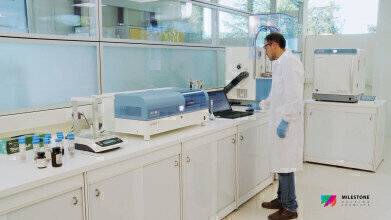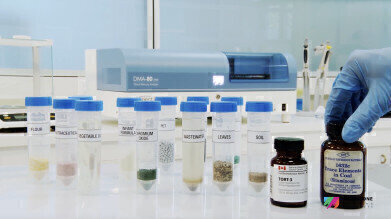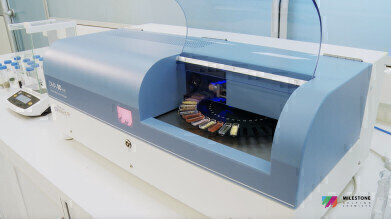Environmental Laboratory
Reliable mercury analysis? Discover how to gain efficiency in mercury analysis
Apr 23 2020
Numerous analytical methods are available for total Hg analysis, such as CV-AAS, CV-AFS and ICP-MS. All of them require sample preparation for most of the samples, and therefore have to deal with potential mercury loss, digestion time, reagents, dilutions, contaminations and others. Even when the analysis is done with ICP-MS, there are several limitations to face: such as contamination and carry over issues, since this metal can attach the line and glass parts, leading to time consuming cleaning procedures. The use of the thermal decomposition amalgamation atomic absorption spectrometry (DMA-80) allows to completely avoid the sample preparation and, consequently, to reduce the time of analysis. The DMA-80 gained popularity for analysis of total Hg, because of its ability to analyse both liquid and solid matrices effectively, to obtain high sample throughput, and low detection limits and costs.
The main advantages of Direct Mercury Analysis are:
- High productivity
- No Sample preparation
- Suitable for solid and liquid samples
- One calibration for all matrices
- Fast cleaning
- No need to use reagents
- No need to replace contaminated parts
- No dilution
Direct mercury analysis is a well-established analytical technique used by the environmental, biological, clinical, food, industrial and academic communities that has been approved by testing/standards organisations such as the EPA in method 7473 and the ASTM using Method D6722.
Double-Beam Technology Direct Mercury Analysis: The new DMA-80 evo
The DMA-80 was initially developed using single-beam AA technology. In this technique, a beam of light (photons) from the hollow cathode light source is directed through the sample compartment, where the analyte atoms generated by the excitation source absorb a characteristic wavelength of light, which is then passed into the optical system, detected and converted into an electrical signal.
Since variations in the lamp energy can potentially compromise precision and detection capability, for the very first time, the benefits of double-beam technology have now been incorporated into the design of a direct mercury analyser with the Milestone DMA-80 evo. With this technology, a reference beam monitors the lamp energy whereas the sample beam reflects absorption of the analyte photons. The observed absorbance measurement is the ratio of the sample and reference beams. Double-beam technology compensates for the effects due to drift in lamp intensity, electronic and mechanical fluctuations, and thermal instability that affect both the sample and reference beams equally. This significantly increases the signal-to-noise ratio, which greatly improves the stability of the signal, resulting in a lower limit of quantification and enabling more accurate and precise mercury determinations even at the low-ppt level.
Learn more about DMA-80 evo.
Digital Edition
IET 34.2 March 2024
April 2024
Gas Detection - Biogas batch fermentation system for laboratory use with automatic gas analysis in real time Water/Wastewater - Upcycling sensors for sustainable nature management - Prist...
View all digital editions
Events
Apr 22 2024 Hannover, Germany
Apr 22 2024 Marrakech, Morroco
Apr 23 2024 Kuala Lumpur, Malaysia
Apr 23 2024 Kintex, South Korea
Apr 23 2024 Edmonton, AB, Canada




















